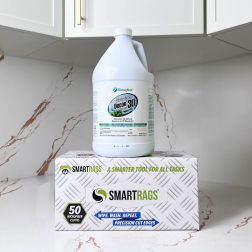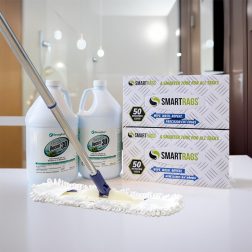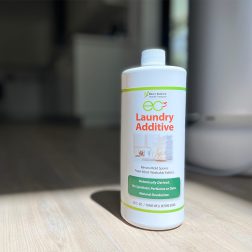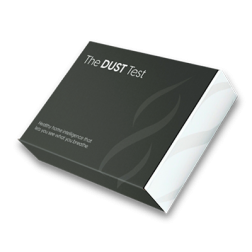Mold Resources
Understanding how to identify and address mold in air vents is essential for maintaining a healthy home environment. Toxic black mold, such as Stachybotrys chartarum (commonly referred to as black mold), can severely impact indoor air quality and pose significant health risks. Here’s what you need to know.
How Does Mold Get in the Air Vents?
Mold spores are naturally present in the air and can easily enter your home’s HVAC system. These microscopic particles remain dormant until they find the right conditions to grow: moisture and an organic food source.
There are several potential sources of moisture in HVAC systems:
- Humidity: Excess humidity can allow mold to thrive. Properly designed HVAC systems regulate moisture and maintain optimal indoor humidity levels.
- Poor Airflow: Insufficient airflow can create stagnant pockets of air, increasing humidity within the ducts.
- Improper Sealing: Gaps or leaks in ductwork can let moisture seep in.
- HVAC Components: Drain pans, condensate lines, and evaporator coils often collect moisture. If not properly cleaned and maintained, they become prime breeding grounds for mold.
Additionally, dust—a common contaminant in HVAC systems—provides mold with ample organic material to feed on, including dead skin cells, pollen, and pet dander.
What Causes Toxic Black Mold in Air Vents?
Toxic black mold, which again is typically referring to Stachybotrys chartarum, thrives in consistently damp environments. Areas like evaporator coils, drip pans, and condensate lines are especially prone to moisture buildup. If these components aren’t regularly cleaned, they can become hotspots for growth and allow for toxic black mold in air vents.
While any source of mold in air vents is cause for concern, toxic black mold is high up on the list of suspects you do not want inhabiting your HVAC system.
Signs of Mold in Air Vents
Look out for these common indicators:
- Visible Mold Growth: Black, green, or white patches around air registers, vents, or HVAC components.
- Musty Odor: A persistent earthy, damp smell from your vents.
- Water Leaks or Condensation Issues: Persistent moisture around your HVAC system.
- Reduced System Efficiency: Mold buildup can hinder airflow and reduce HVAC performance.
- Health Symptoms: Chronic headaches, coughing, fatigue, brain fog, and allergy-like symptoms without a clear cause.
If you notice any of these signs, it’s time to investigate further.
Can Mold in Air Vents Make You Sick?
Yes, mold in air vents, particularly toxic black mold in air vents, can cause health issues. When HVAC systems circulate air contaminated with mold spores, fragments, and mycotoxins, it can trigger a range of symptoms, including:
- Headaches
- Runny nose and watery eyes
- Skin rashes
- Digestive problems
- Chronic fatigue
- Brain fog
Prolonged exposure may also lead to mold-induced asthma, allergic fungal sinusitis, or hypersensitivity pneumonitis. Everyone reacts differently to mold exposure, so symptoms can vary widely.
How to Test for Mold in Air Vents
If you suspect that you’re dealing with mold in air vents, here’s how to start finding answers.
First Step
To determine if there’s a problem, your best bet is to test your dust.
Gravity brings particles like mold spores, mycotoxins, and endotoxins down to horizontal surfaces like floors, doorframes, and furniture. So basically, where dust collects, so do these indoor contaminants.
Testing this dust will help to determine exactly what’s hanging out in your home and potentially causing problems. Highly contaminated dust is not only a health hazard, as all of those particles can enter the body when they’re kicked up into the air when the dust is disturbed. It also indicates that there’s an underlying contamination problem somewhere in the home.
The Dust Test is the first stop on your journey to help improve indoor air quality in your home. It will help you know if there’s a problem before spending thousands of dollars trying to find one (both medically and in your home). And, if there is a problem, The Dust Test will indicate what you’re being exposed to before your inspector comes so that you can ensure they will find where it’s coming from.
If these results show an issue, you can bring in a mold inspector to better hone in on what’s going on inside your home.
Showing the single result
What to Expect From a Mold Inspector
A qualified mold inspector sets the foundation for success in properly handling a contamination situation. All of the data they collect will help create the comprehensive protocol needed by the remediation team to appropriately handle the toxic situation.
When looking for an inspector, don’t be afraid to ask questions about their experience.
- What’s their track record?
- What training have they had?
- Are they skilled at helping hypersensitive individuals?
- What’s their process?
- What tests will they run?
- Do they have any limitations?
- Will they draft a protocol after assessing the data for the remediation team?
This will help shine a light on how seriously they take this issue and ensure that the process is thorough enough to resolve the contamination situation.
A qualified mold inspector should tick a few boxes when answering these questions. For example, a proper inspection should then take a few hours at a minimum and use a variety of methodologies.
Some of the testing data you should expect to see are:
- Species of mold present
- Quantities of each mold
- Potential spore presence in the HVAC system
- Presence of mycotoxins
- Presence of bacteria
All of this information is needed to understand what’s actually existing in the home so that they can create the right protocol for the unique situation. If other contaminants such as mycotoxins and bacteria are present, the remediation protocol will need to address this. If the mold has spread to other areas of the home, the data should outline this so that plans can be made to address every area.
Successful remediation requires every piece of the puzzle to fit together correctly in order to decontaminate a home.
How to Get Rid of Mold in Air Vents
Knowing who to hire for a mold inspection sets up an excellent foundation for remediation that’s successful. If the data collected by the inspector shows that there’s mold in air vents, your next step is to find a remediation team to come in and get rid of that contamination. Like mold inspectors, though, not all remediation teams are built the same.
Again, you want a company that prioritizes your health, understands the importance of creating a safe environment, and is confident that they can properly remediate the space. Make sure to ask as many questions as possible to thoroughly assess whether or not they can do the job and do it correctly. Do they have experience helping hypersensitive individuals? Are they confident they can remove mycotoxins, a toxic byproduct of some mold species? What’s their success rate like? If post-testing still shows high levels of contamination, what’s their next move?
This will give you a baseline for what to expect from the company. Another point you should look for is how thorough their remediation process is.
At its heart, a remediation team bent on success should always adhere to three pillars for success.
Remediate the sources properly.
- Identify and address the problems that led to those sources in the first place.
- Eradicate all contamination created by those sources, including toxins and bacteria.
Failure to hit every point can lead to failed remediation and continuing to have mold in air vents in your home. If the source that led to the contamination isn’t addressed, the conditions for growth are still there, allowing the problem to come right back. High levels of contamination left behind can lead to continued exposure. This includes mycotoxins and bacteria, which can be removed from the space. It requires a thorough decontamination process to deal with these hard-to-eliminate particles, but it is possible.
Once the remediation is complete, the mold inspector should then come back in and complete post-testing to ensure the job was done correctly. If a company does not agree with this, they are not the company for you.
Gathering this information will not only give you peace of mind knowing that they’ll do everything in their power to remediate your home, but you’ll also know that they’re in your corner fighting for a healthy home. When it comes to dealing with mold, that’s one of the most important things for winning the battle and getting rid of this fungus among us.
Tools to Prevent Mold in Air Vents
Showing all 3 results
-

Mold & Bacteria Contents Cleaning
Remove harmful pollutants that accumulate in the dust of your home. (Options available for renters...
-
$99.00 – $349.00 SHOP NOW -

HomeCleanse Cleaning
Take your cleaning to the next level buying all the tools we use to keep...
-
$299.00 – $549.00 SHOP NOW -

EC3 Laundry Additive
Add EC3 to every rinse cycle to rinse away mold, bacteria and musty odors from...
-
$23.00 SHOP NOW
Still Have Questions?
A member of our team is here to help! Click on “Get Started ➤” below to book a consultation with a member of the HOMECLEANSE team. We have a few quick questions that will help us put together a roadmap to solve or prevent all of your mold problems.
Two minutes of your time could lead to better health for you and your family.
Resources:
- The current role of Aspergillus and Penicillium in human and animal health
- Featured Mold - Aspergillus and Penicillium - Indoor Science
- Aspergillus | Mycology | University of Adelaide
- Penicillium Sp. | Viticulture and Enology
- Aspergillus and Penicillium
- Aspergillosis - Symptoms & causes - Mayo Clinic

